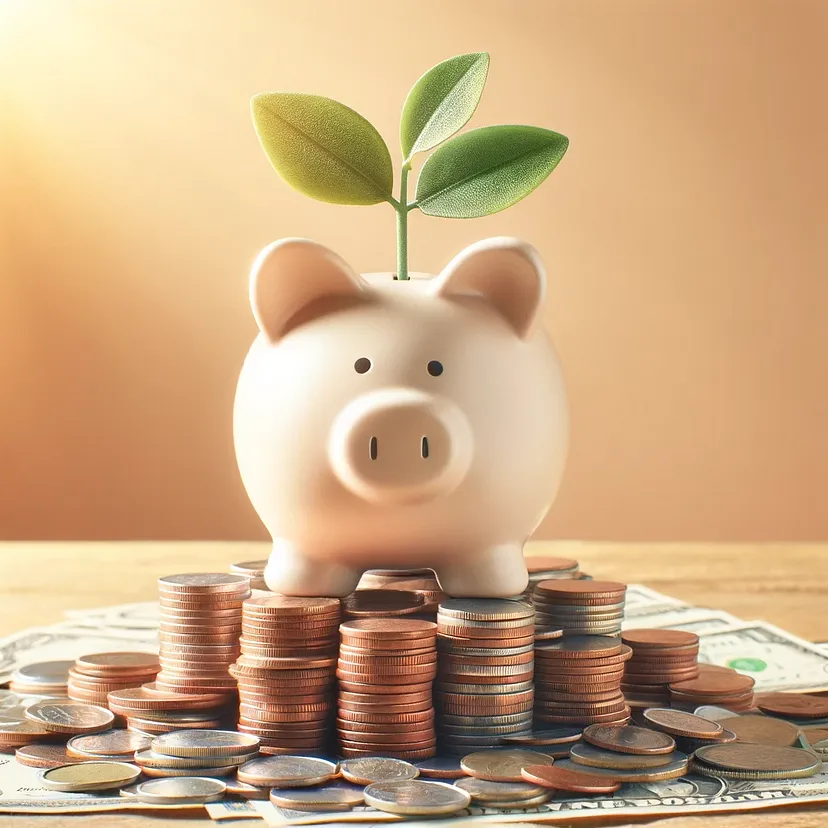Debt Management and Financial Freedom
How Payday Loan Lenders Goal Women Of Color
Did that a significant financial issue plagues women of color? They’re intentionally targeted by payday loan lenders.
Have you ever ever wondered about payday lenders? Why they’re often in neighborhoods with vacant shopping centers and boarded-up businesses?
These payday loan lenders pretend to be superheroes. When actually, they’re targeting communities of color.
They arrange in communities with financial strain. Then they begin targeting individuals with low incomes.
As well as, they aim immigrants and single moms. It makes the cycle of debt worse.
Payday lenders are a giant issue contributing to the racial wealth gap. And it impacts so many ladies of color across the country.
But before we delve into this, let’s discuss what payday loans are.
What’s a payday loan?
Simply, payday loans are costly money advances or loans. They need to be repaid in full by the borrower’s next payday.
To get a loan like this, you may be asked some questions. Your social security number, I.D., a checking account, and a job are asked about. There’s not often a credit check involved.
And online lenders are selling online loans that make it even easier to lend. No more charges are due if the balance is paid in full. Unfortunately, most of them usually are not.
How payday loans hurt borrowers
These short-term loans are designed for people burdened with credit difficulties. They’ve expenses and wish money quickly. Borrowers might turn to payday lending once they haven’t any access to bank cards or bank loans.
Unfortunately, cash-strapped consumers of fast payday loans may default. In the event that they do, they incur high-interest rates.
Most payday loans have triple-digit rates of interest. So we’re talking about 200% – 500% APR!
A Pew Charitable Trust study found that twelve million Americans take out payday loans annually. But most individuals can’t afford to pay back this kind of loan when it’s due.
Within the PEW study, the common payday loan was $375. Borrowers paid $520 in interest.
The Consumer Financial Protection Bureau estimates that 20% of payday loans find yourself in default.
The Truth in Lending Act requires the lender to inform the price of a payday loan before the borrower agrees. But these terms are sometimes complicated. Because of this, the true cost of same day payday loans isn’t all the time easy to grasp.
Quick payday loan lenders prey on communities of color, primarily women
Communities of color, particularly Black communities, are historically disadvantaged by unfair lending practices.
These communities are targeted because they could not have access to regular banking services. As well as, they’re misinformed concerning the terms and conditions of fast payday loans.
Advertised as a option to help people pay bills, same day payday loans are nothing greater than predatory lending. Lenders don’t check that you could afford the loan, only that you will have a checking account and job.
A typical borrower has a number of of the next characteristics. They’re young, have children, don’t own a house, and haven’t any access to credit.
In a financial emergency, people will cope in some ways. These include paying bills late, using savings until they’re gone, and borrowing from family and friends. But the issue arises when someone has used all possible alternatives.
So fast payday loans lenders offer a fast solution if you need money. But with annual rates of interest of as much as 400% in some cases! Meaning that what seems good can quickly turn bad.
The gender wage gap affects the flexibility of girls of color to pay back loans
Gender and race affect the flexibility of girls of color to earn fair wages. It’s one in every of the financial statistics that severely impacts women.
Overall women are paid 83% of what men make. 17% less on average!
Nevertheless, the numbers are worse for ladies of color. Black women make 63 cents for each $1 their white male counterparts earn. The wage gap for Latina workers is 55 cents.
Women of color, particularly Black and Latina women, usually tend to be a family’s sole breadwinner than white women. And black moms are almost definitely to be the primary economic support for his or her families.
Which suggests they need more cash to support their families. Nevertheless, they’re grossly underpaid.
So women who underearn and reside paycheck to paycheck are all the time on the verge of catastrophe with unexpected costs. Which can result in getting same day payday loans.
So this affects their ability to construct credit, get out of debt, and break the cycle of poverty.
The importance of monetary literacy for ladies of color
A recent study published by TIAA Institute titled “Financial Literacy and Wellness among African Americans” found that African Americans struggle with low levels of monetary literacy.
The financial literacy gap exists in African Americans no matter gender, age, income level, or education.
Nevertheless, the TIAA reports that financial literacy is higher amongst men. There’s a seven percentage point difference between African-American men and girls. The difference holds true even after accounting for other socio-economic aspects.
Credit scores and homeownership
Only 43.4% of Black households own a house in comparison with 72.1% of white households.
The measure disproportionately hurts Black mortgage borrowers’ credit scores. Plus their debt-to-income ratios. And defaulting on a payday loan can impact one’s credit.
Knowing the good thing about healthy credit and the benefits of black homeownership matters. It may possibly help close the wealth gap.
Poverty won’t disappear just by educating the disadvantaged. Nevertheless, financial literacy may be the important thing to slowing the cycle.
Financial literacy is vital for ladies of color to achieve financial wellness. It’s why we provide completely free financial literacy courses to assist women of color succeed.
What to do should you got a payday loan and may’t pay it back
Perhaps you had some short-term financial needs and took out a payday loan. Perhaps a loan was your only option and now you are having trouble paying it back.
Quick payday loans usually are not a long-term financial solution. So here’s what to do should you’re struggling to pay back the cash.
- Together with your next paycheck, pay expenses first. Put the remainder of the cash towards your loan.
- Consider credit counseling or financial services to show you how to make a plan.
- Ask about an prolonged repayment plan.
- Seek the advice of the patron financial protection bureau website.
- Consult with the Department of Financial Protection should you imagine you have been the victim of a scam.
Paying back a loan with high-interest rates like this may be tough. But you are not alone and there are methods through it.
Payday loan alternative options that may also help women of color
Women of color who turn to same day payday loans often don’t understand they could have a payday loan alternative. As an illustration:
- Asking their employer for an advance paycheck.
- Selling clothes, household goods, and other items for quick money.
- Researching nonprofits that make small-dollar loans with higher loan terms.
- Enthusiastic about a loan from a credit union for a long-term solution.
- Using a bank card.
It is vital to acknowledge that bank cards usually are not a substitute for an emergency fund. Nevertheless, even the best bank card interest might be lower than the triple-digit rates of interest that payday loans offer for a short-term loan.
Lending circles are common amongst women of color. Often these lending circles also often known as a Tanda, Sociedad, or Susu may also help to avoid wasting for a goal. Unfortunately, they will not be available when needed most.
What States can do to assist consumers
To forestall borrowers from becoming trapped in a debt cycle, 16 states and the District of Columbia have banned payday loans. And so they protect consumers from high-cost short-term loans through rate caps.
Along with these protections, the National Consumer Law Center has proposed some key suggestions. And these will help states protect consumers from high-cost loans. As an illustration, they suggest:
- “Cap rates for small loans at 36%, and lower for larger loans, as many states do.”
- “Include all fees and charges in the speed cap for each closed-end and open-end credit.”
- “Ensuring that the state deceptive practices law covers credit and bans unfair, abusive, or deceptive practices.”
- “Ban or cap fees and require any fees to be refunded pro-rata if a loan is refinanced.”
Changes in policy
Unfortunately, in 2020, the FDIC announced plans to repeal two key policies. These policies help protect probably the most vulnerable consumers against high-cost bank payday loans above 36%. Although many states have adopted a 36% annual rate of interest cap, many haven’t.
Opponents to the interest cap argue that these policies would eliminate much-needed loans to underserved communities. I’d argue that the policies protect vulnerable communities from predatory lending while fulfilling a necessity.
What banks can do to assist consumers
Banks are reluctant to make small short-term loans available to those with bad or no credit history. Despite the fact that this may very well be a superb payday loan alternative.
But restricting access doesn’t solve the problem of low-income wages. As an alternative, it gives option to an expensive safety net: fast payday loans.
Providing access to money advances or personal loans to those that don’t have the posh of a bank or bank card is needed. As well as, banks shouldn’t financially debilitate those that need assistance probably the most.
Help is required from everyone to stop payday loans unfair practices
Capping rates of interest is one option to protect women of color from the predatory lending practices of fast payday loans. Fair wages, financial literacy, and fair lending practices are a few of the others.
Nevertheless, it takes more effort on all levels to lobby for and implement these measures. From government to banking to communities.
As individuals and girls of color, we are able to play our part by promoting financial education inside our families and our communities. And these free financial courses can show you how to learn about money and achieve your goals.





